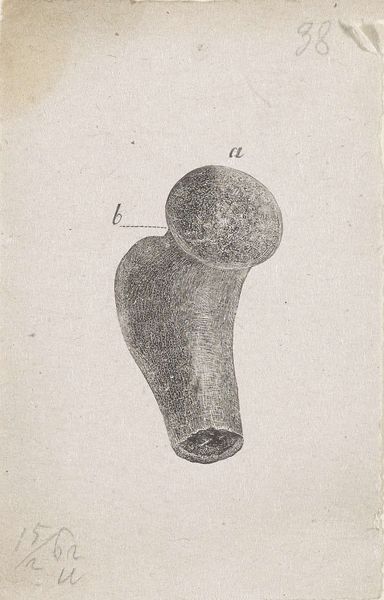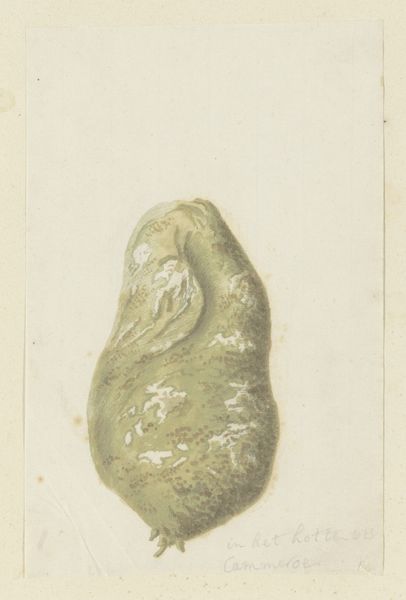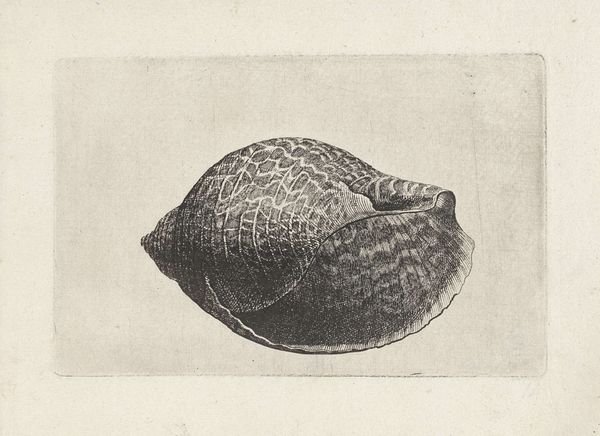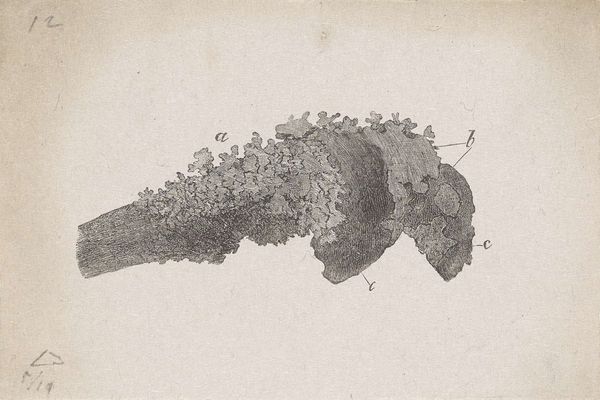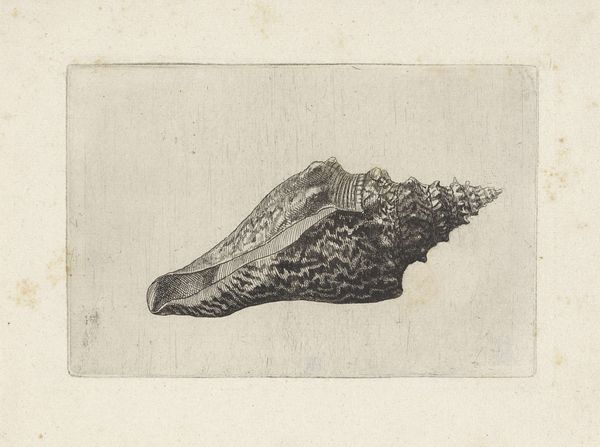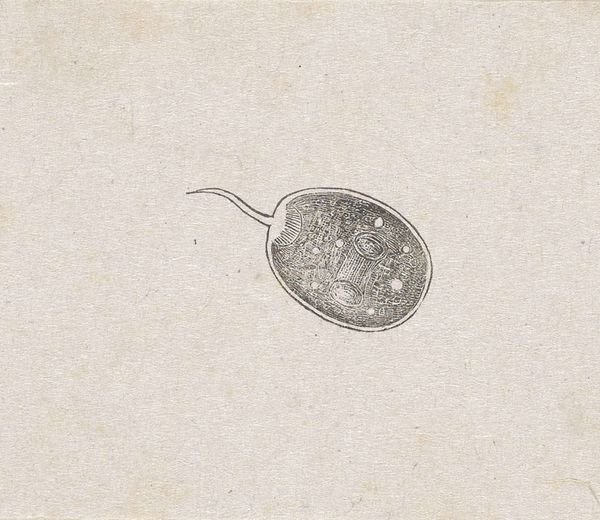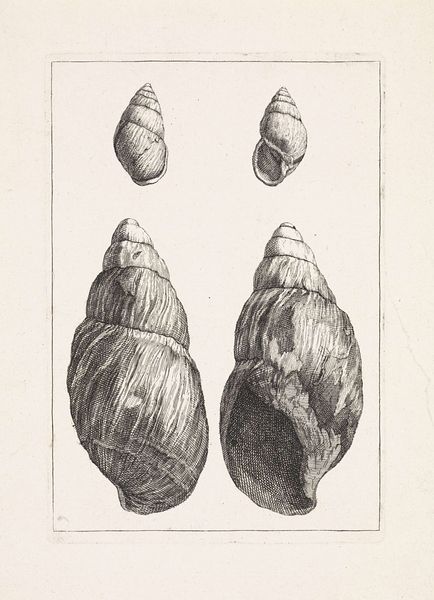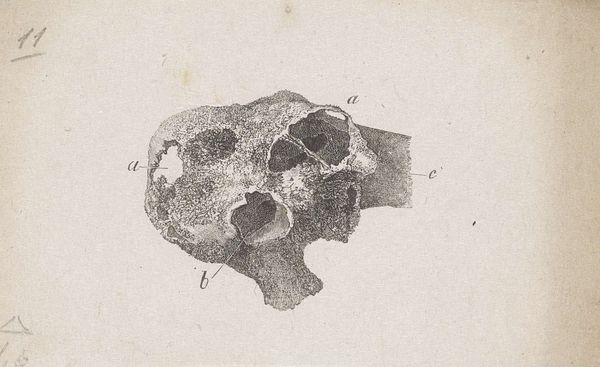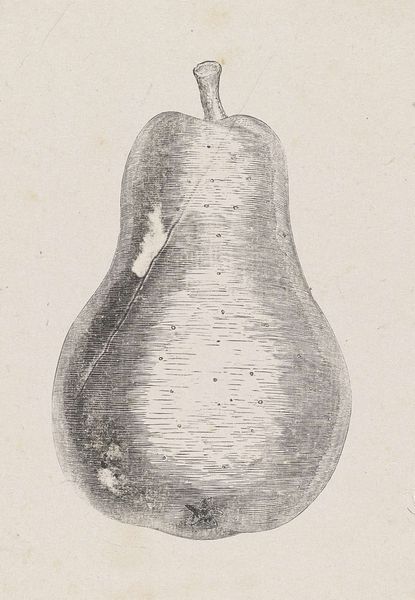
Onderdeel van het menselijk lichaam met een afwijking 1836 - 1912
0:00
0:00
drawing, print, engraving
#
drawing
# print
#
old engraving style
#
figuration
#
personal sketchbook
#
history-painting
#
academic-art
#
engraving
#
realism
Dimensions: height 52 mm, width 41 mm
Copyright: Rijks Museum: Open Domain
Curator: This is "Onderdeel van het menselijk lichaam met een afwijking" a work whose title translates roughly to "Part of the human body with a defect." It's a drawing and print of uncertain date by Isaac Weissenbruch, located here at the Rijksmuseum. What are your first thoughts on it? Editor: Well, the title alone primes me for unease! The drawing looks…biomorphic. Like some single-celled organism seen under a microscope, a somewhat frightening egg form with porous lesions, and cilia almost. Very clinical. It's unsettling, actually, like something from a nightmare about biology class. Curator: I think the unsettling quality is partly deliberate. Anatomical and pathological studies, though scientific, held a strange fascination in the 19th century. Think about the history of public dissections. It catered to both scientific inquiry and a certain morbid curiosity within the broader population. Prints like this, distributed widely, played a role in that dissemination. Editor: So, it’s playing on both the wonder and the horror of what's inside us. As an artist, it makes me wonder about the artist's mindset. What inspired this piece? Was it observation or imagination fueling his interest? The detail seems too…specific to be purely imagined. Did Weissenbruch sketch it while examining a specimen himself, then produce the print afterward? I feel the artist was more keen on precision rather than emotionality; there isn't necessarily much passion present beyond being a curious observer of nature. Curator: Well, to go deeper into it, prints in general were extremely efficient media. This wasn't merely artistic, it was a form of communication in a society increasingly aware of germs, illnesses, and disease. Even the realism on display served an educative function—the artist needed to ensure clarity to inform the viewers adequately about whatever bodily abnormality was in question. Editor: Hmm, true. Thinking of its purpose, it strikes me less as art and more as a scientific document, a visual aid in medical studies perhaps. It doesn’t mean that art and medicine cannot go hand-in-hand, though. As an artist, I acknowledge the intrinsic aesthetic merit in clear, precise observation, the raw visual data recorded without additional sensationalizing emotion. It simply becomes… information. Curator: Exactly. This artwork showcases art's complex role within the social sphere—especially how science can also shape public understanding and fear. It prompts one to reflect on art as more than aesthetic form. Editor: I agree. I began by seeing something eerie, yet seeing its intent I understand that the visual vocabulary is almost devoid of personal intention. Interesting how much our view changes with that realization!
Comments
No comments
Be the first to comment and join the conversation on the ultimate creative platform.
